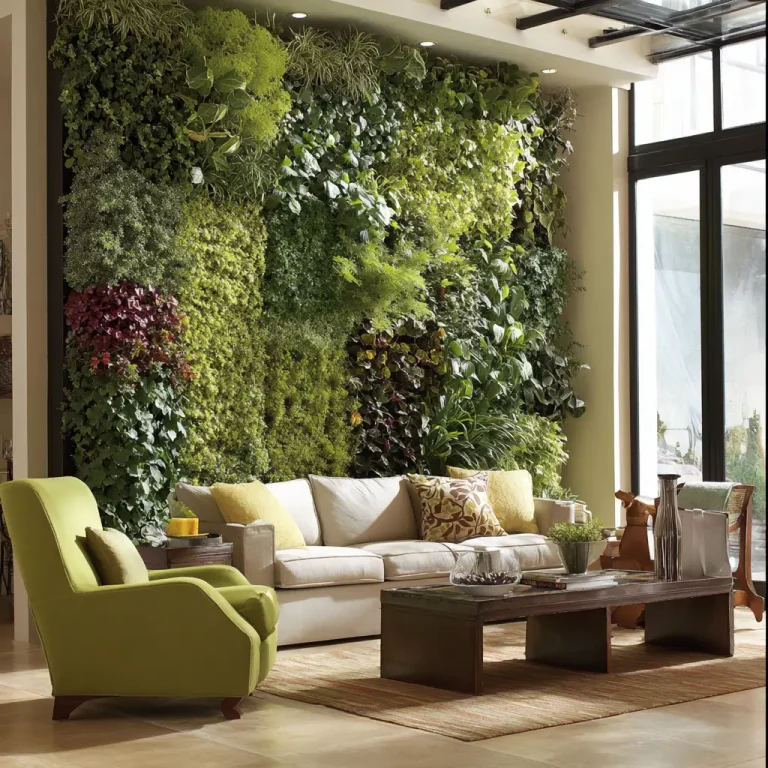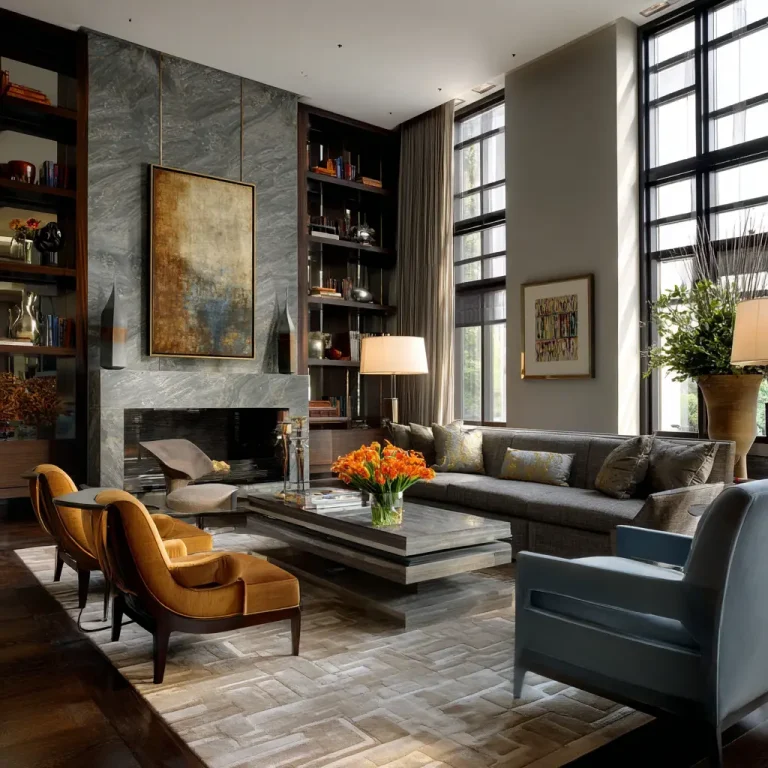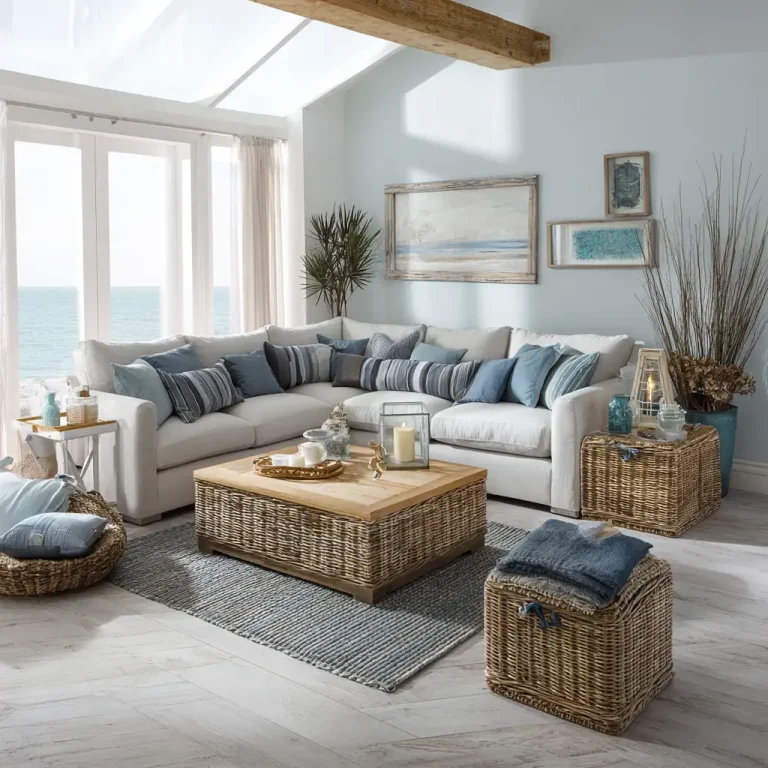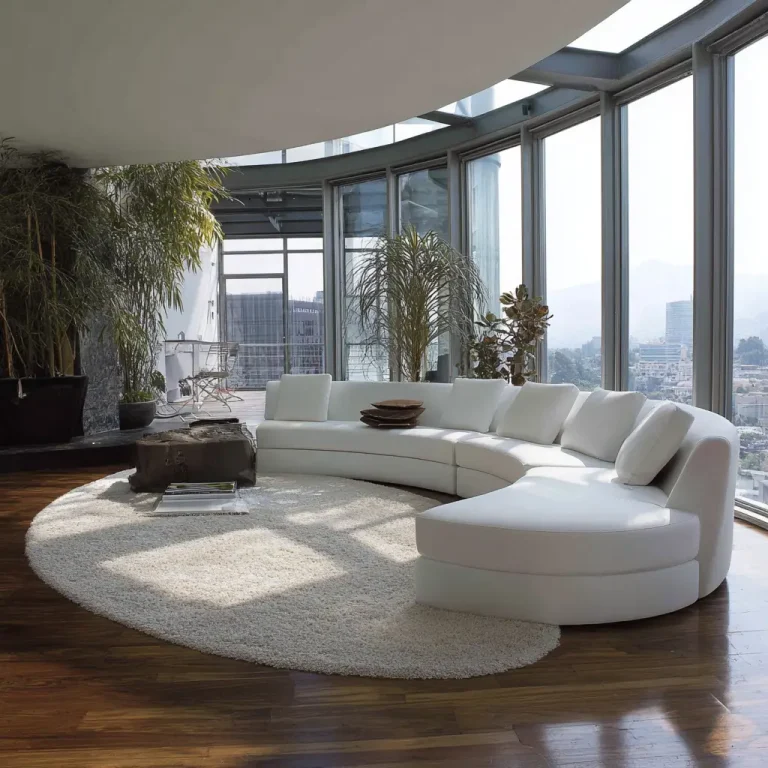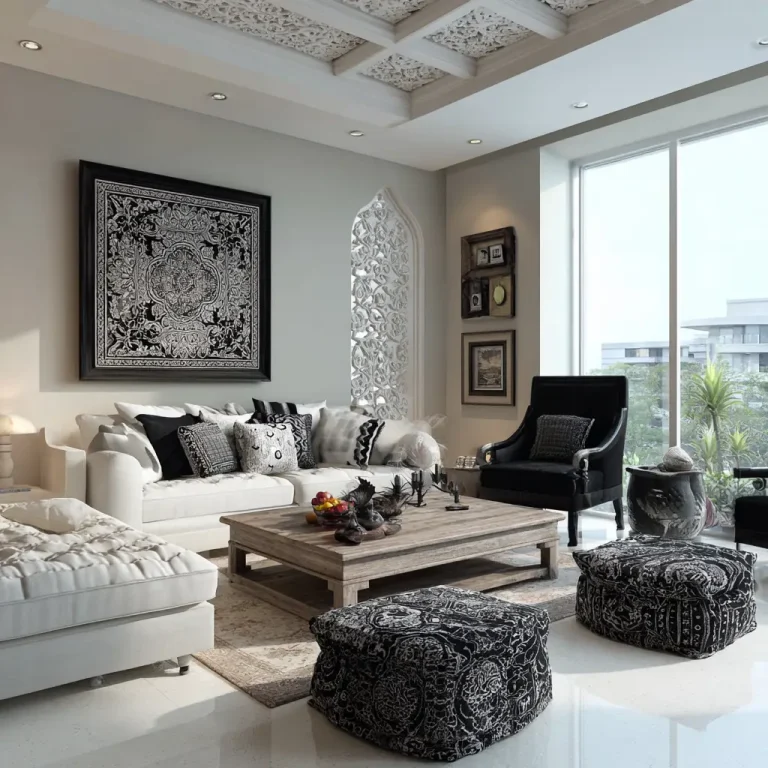22 Fall Ceiling Designs for Living Room That Should Be Effective and Humanizing
The ceiling of your living room is often the most underutilized surface in home design. While we usually spend time and money decorating our walls and floors, the ceiling remains a blank slate—yet it has enormous potential to impact how a space feels. Fall ceiling designs, also known as false ceilings, can enhance aesthetics, improve lighting, hide wiring, and even help with temperature control. Whether you want a cozy family space or a stylish entertainment zone, here are 22 fall ceiling design ideas that can add both beauty and functionality to your living room in a way that feels personal, modern, and warm.
1. Classic Tray Ceiling
A tray ceiling offers a subtle architectural feature that adds depth and elegance to your living room. It consists of a central section that is either recessed or raised, surrounded by a border that creates the tray-like look. When paired with soft lighting such as LED strips or recessed lights, it gives the entire space a warm, ambient glow. This design works beautifully in both contemporary and traditional interiors, offering a sense of refinement without overpowering the room.
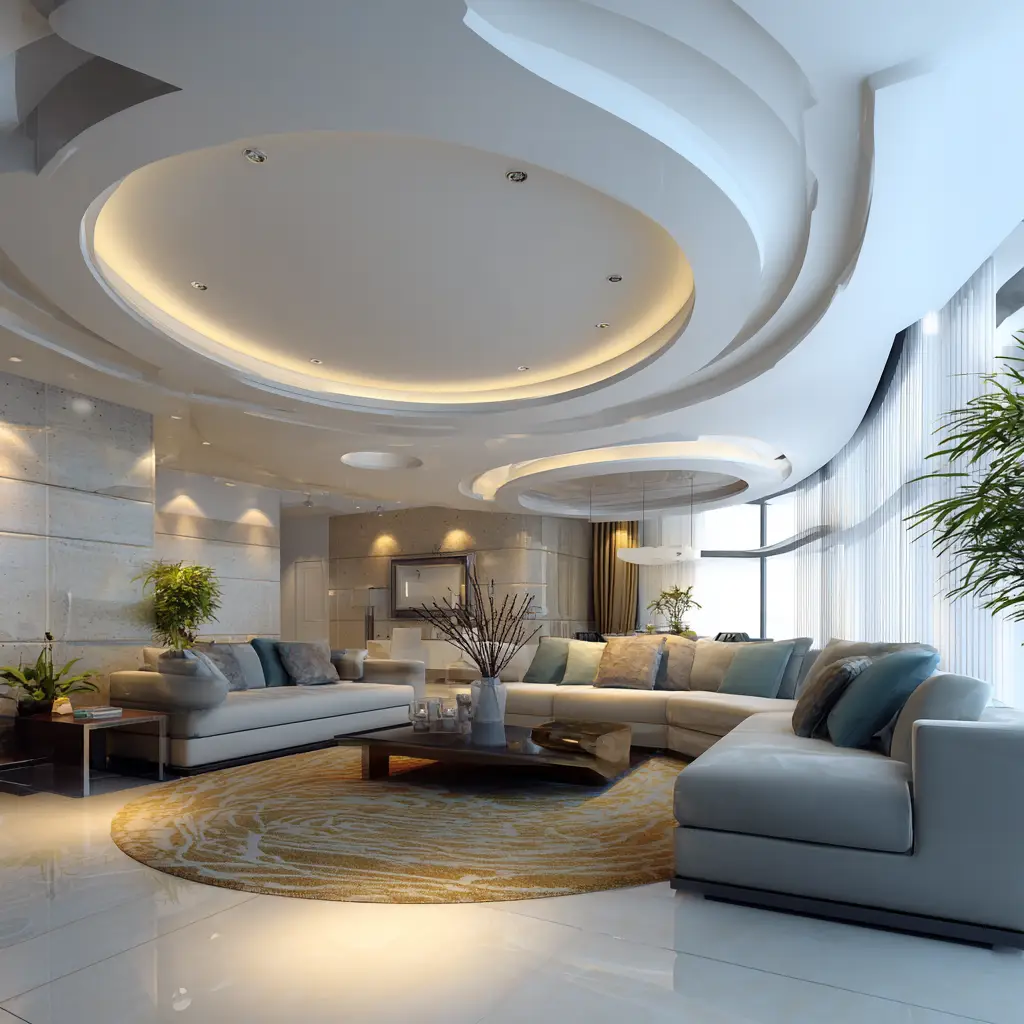
2. Coffered Ceiling Style
For those who appreciate symmetry and structure, a coffered ceiling brings in classic charm. This design features a grid of recessed panels, usually bordered by beams or mouldings. While traditionally found in larger rooms, modern materials and shallow designs make it adaptable even for average-sized living rooms. It adds richness, helps with acoustics, and feels grand without being overwhelming, especially when painted in calming tones like ivory or light grey.
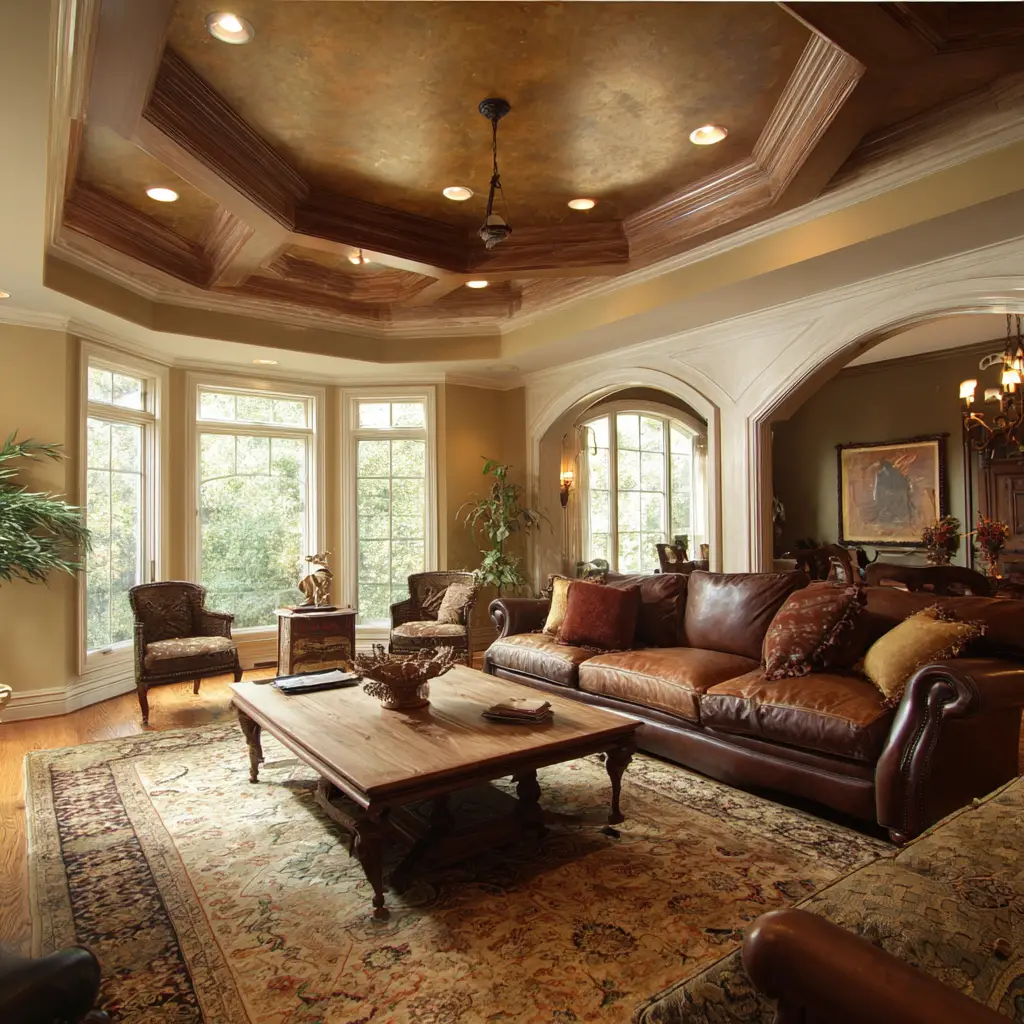
3. Simple Single-Layer Ceiling
If you prefer a clean, fuss-free look, a single-layer false ceiling can be the right choice. It provides just enough depth to install lights, conceal wiring, and add a modern finish. This kind of design is perfect for minimalist homes or apartments where space is limited but you still want a polished and finished look. A smooth white ceiling with recessed lights creates an open, airy ambiance and can make the room feel larger.
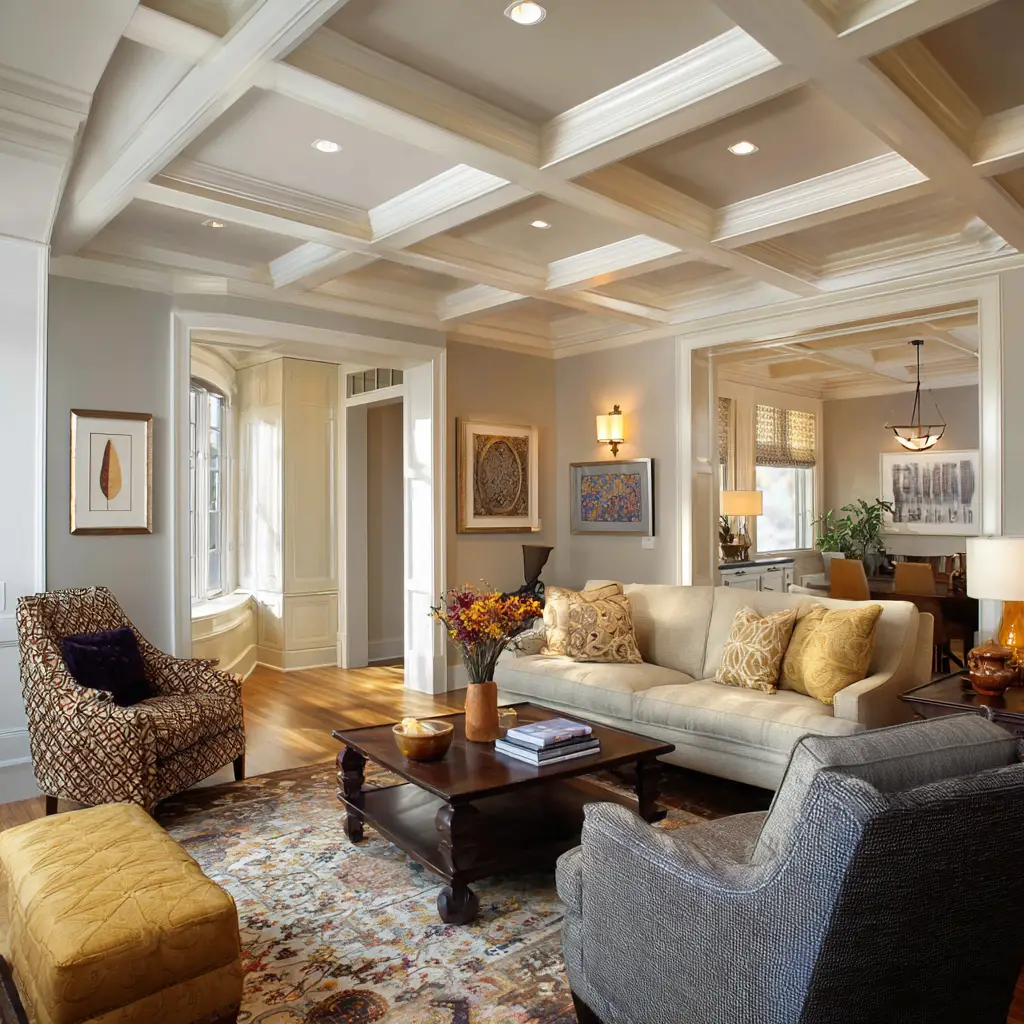
4. Multi-Level False Ceiling
A multi-level fall ceiling introduces dimension and can visually organize the space. This is especially useful in open-plan living areas where the ceiling design can help define zones. For example, one level could be above the TV unit, while another frames the sitting area. Varying the height and adding soft lighting along the edges enhances both function and visual appeal. It’s a way to bring layers into your ceiling just like you would in your wall decor or furniture layout.
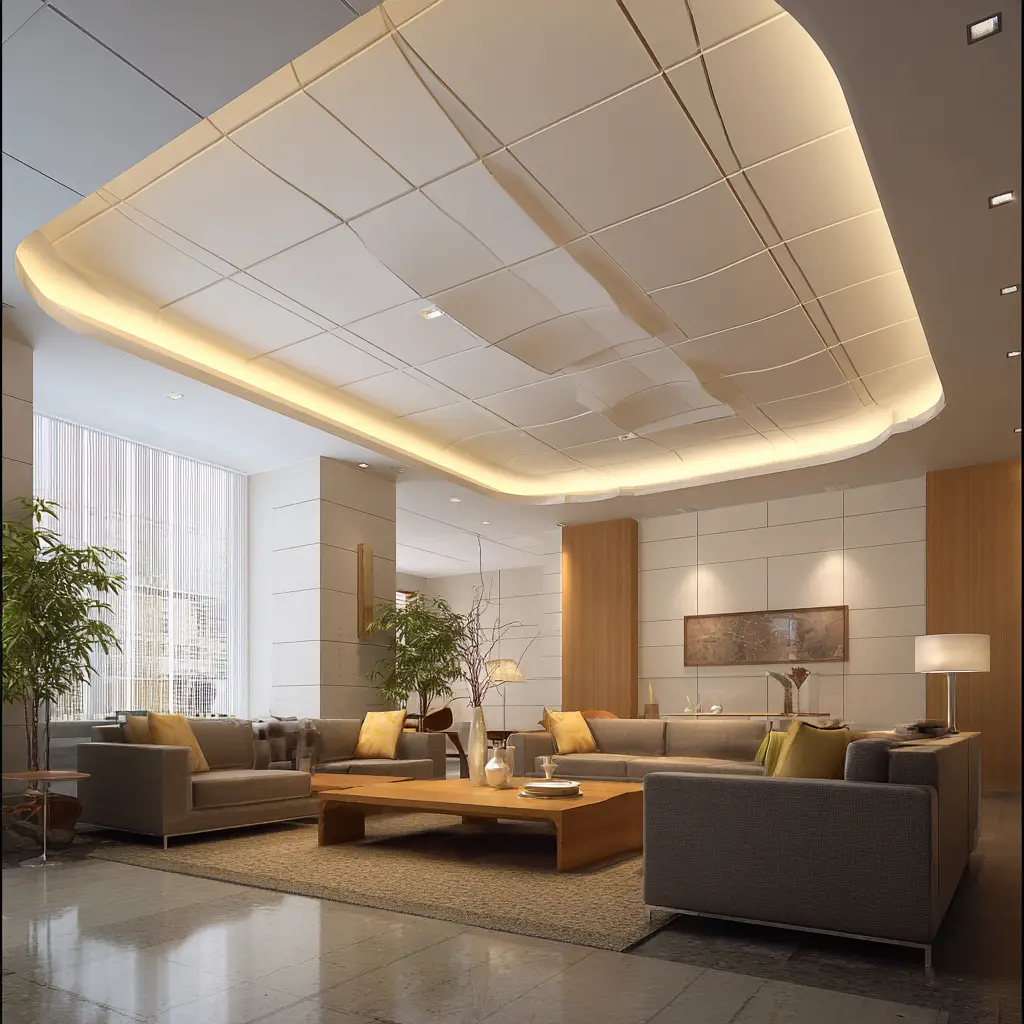
5. Wood Panel Fall Ceiling
Wood has a natural warmth that makes any space feel grounded and inviting. A fall ceiling made with wooden panels—or even laminate wood finishes—can create a cozy and sophisticated environment. It pairs especially well with earth-toned walls, neutral furniture, or rustic decor. Whether you go with dark walnut, honey oak, or light pine, wood adds a tactile element to your ceiling that makes the living room feel connected to nature.
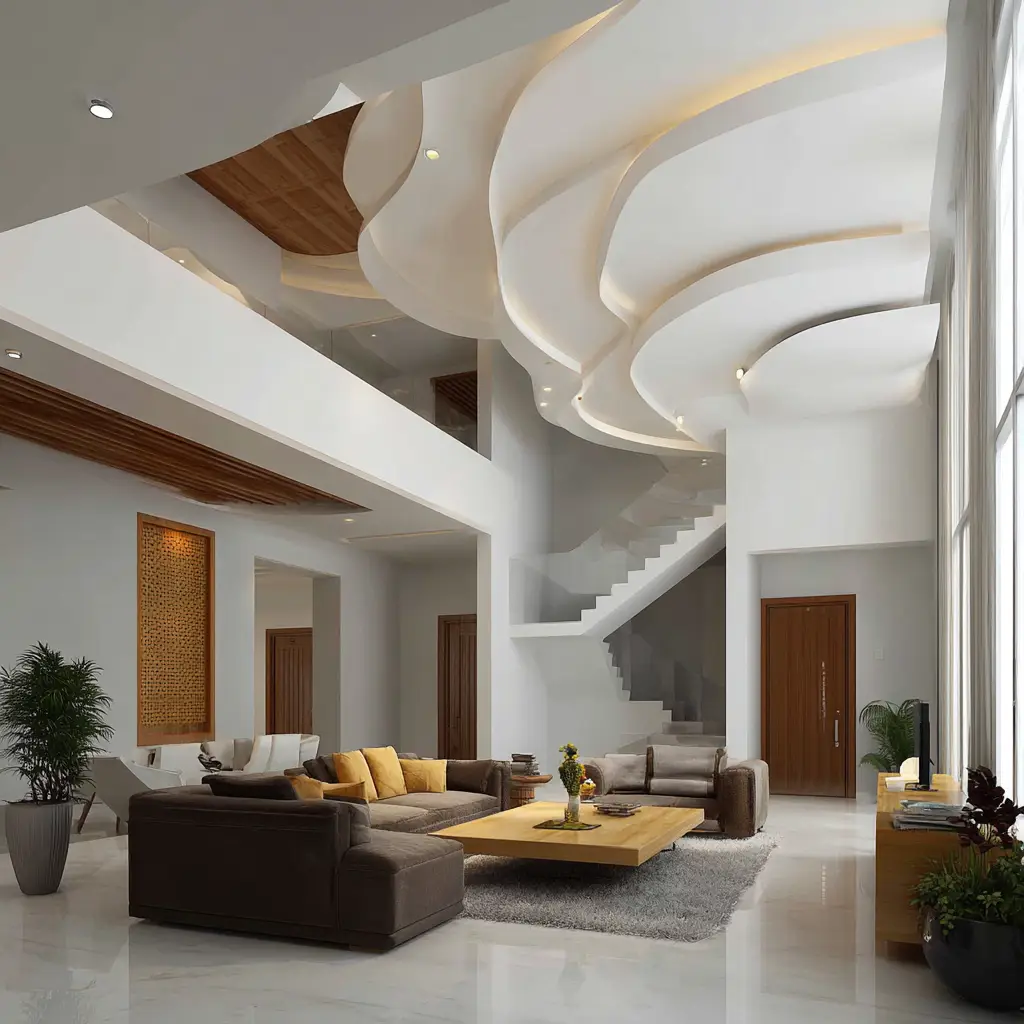
6. Pop Design with Cove Lighting
POP (Plaster of Paris) is widely used for fall ceiling designs due to its smooth finish and flexibility. When used with cove lighting—indirect lighting that is tucked into ceiling recesses—it can produce a soft, glowing edge that feels relaxing and modern. This type of lighting avoids the harshness of overhead bulbs and creates a beautiful contrast, perfect for winding down in the evening or entertaining guests in a stylish setting.
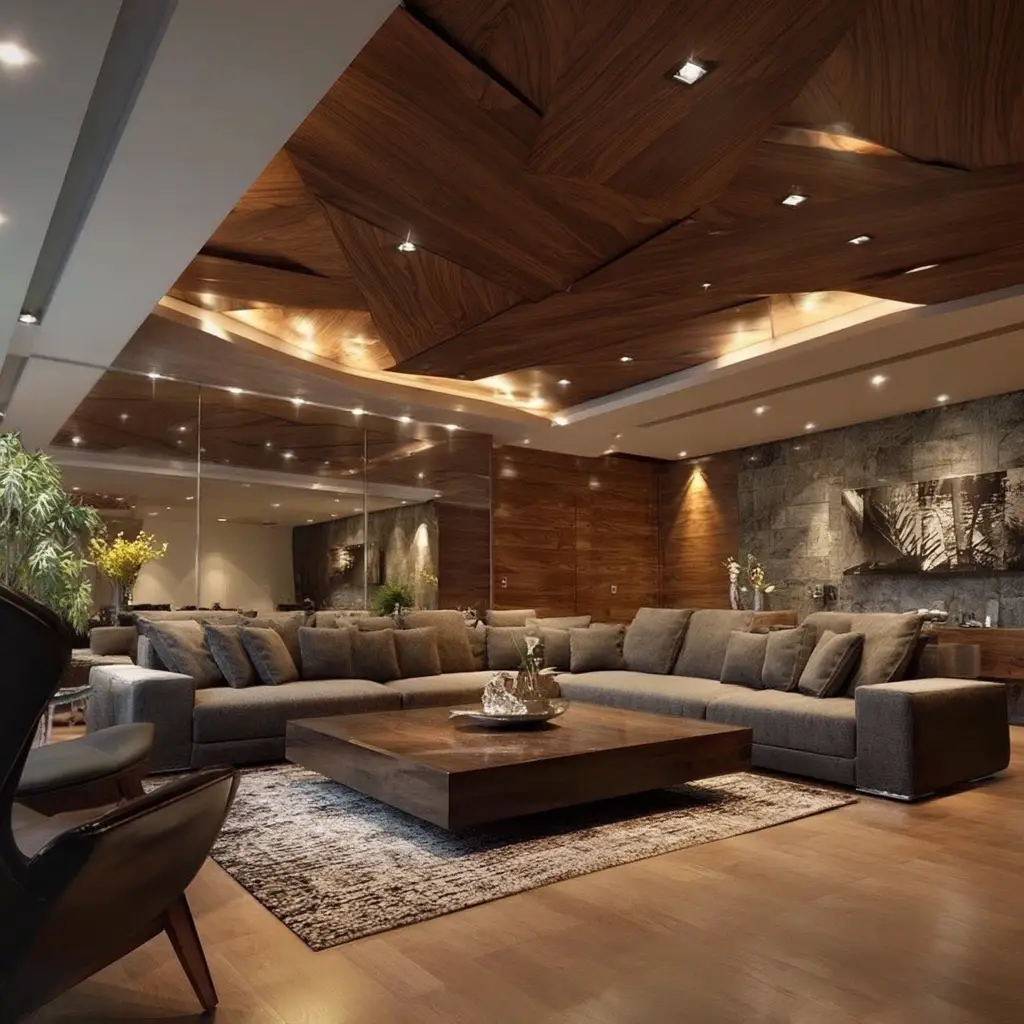
7. Geometric False Ceiling
For those with a modern or artistic bent, geometric ceiling designs can be a striking choice. Think of bold patterns made from intersecting lines, triangles, or hexagons integrated into the ceiling using POP or wood. These designs break away from the usual flat look and add a sculptural feel to the room. It’s an excellent way to make a bold style statement, especially in minimalist interiors where the ceiling becomes the main visual feature.
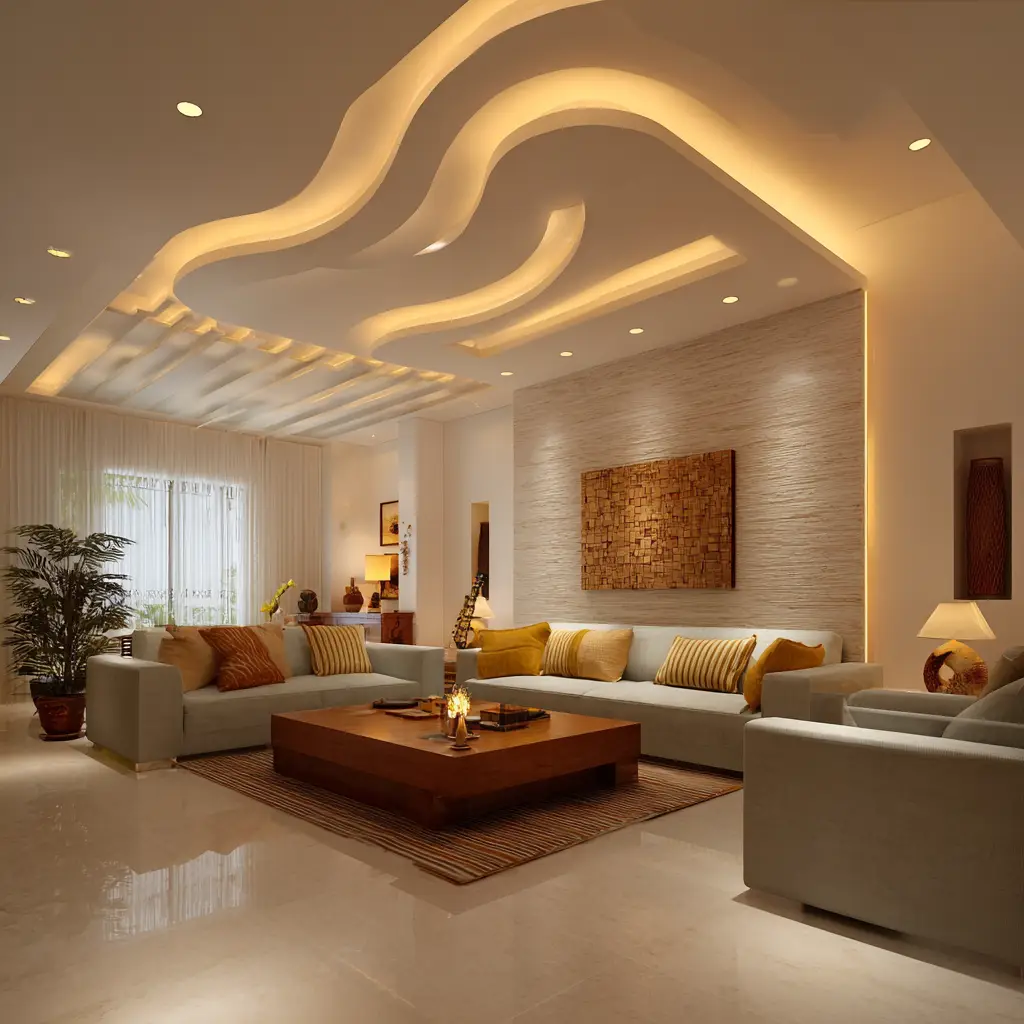
8. Circular Centerpiece Ceiling
A ceiling with a circular or oval feature at the center adds an elegant touch and draws the eye upward. This is particularly useful if you want to highlight a chandelier or a ceiling fan. The round design softens sharp angles in the room and creates a feeling of unity. It can be styled with contrasting colors or subtle lighting to add depth and personality.
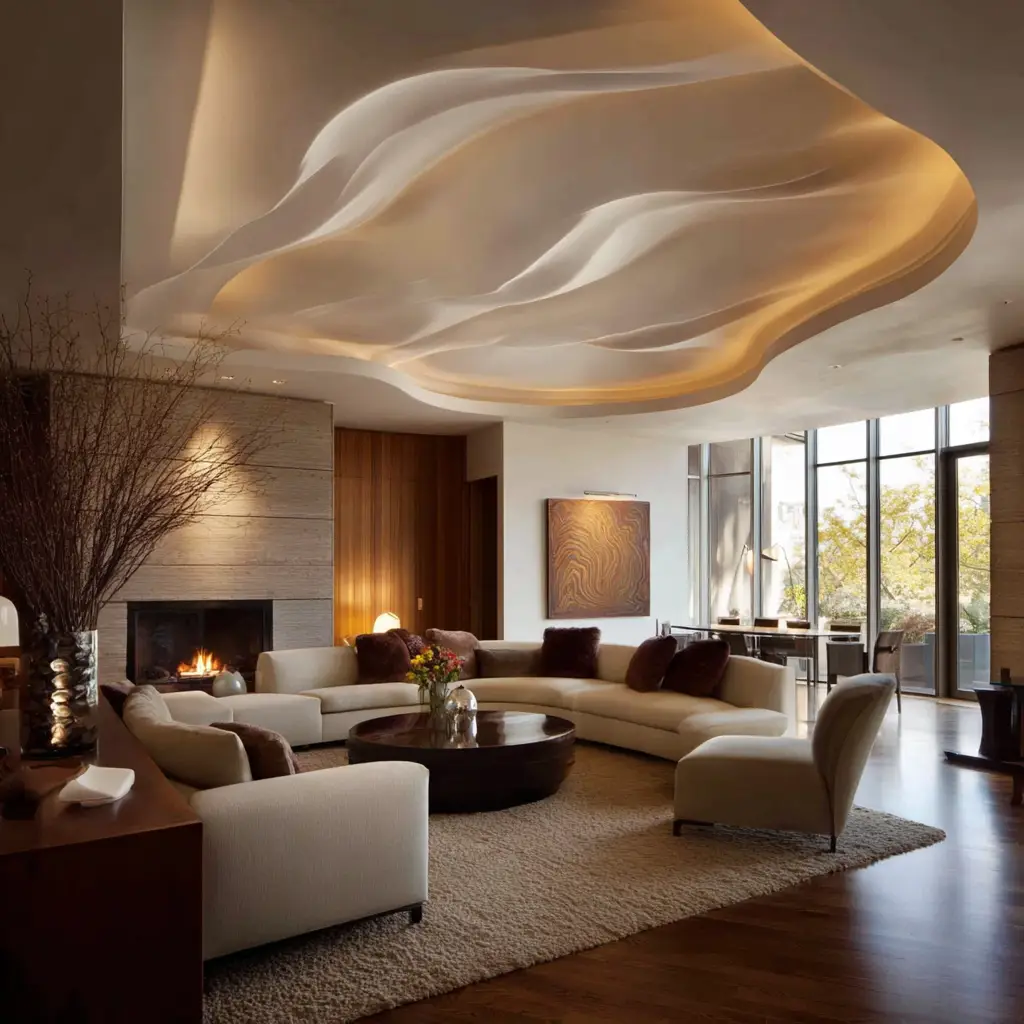
9. False Ceiling with Wooden Beams
Wooden beams, whether real or faux, bring a traditional and comforting feel to the living room. When combined with a fall ceiling, they create a rustic-modern look that feels timeless. Faux beams are lightweight and easy to install, and they pair well with neutral colors or industrial-style lighting. It’s a great choice for homes that aim to blend vintage charm with contemporary aesthetics.
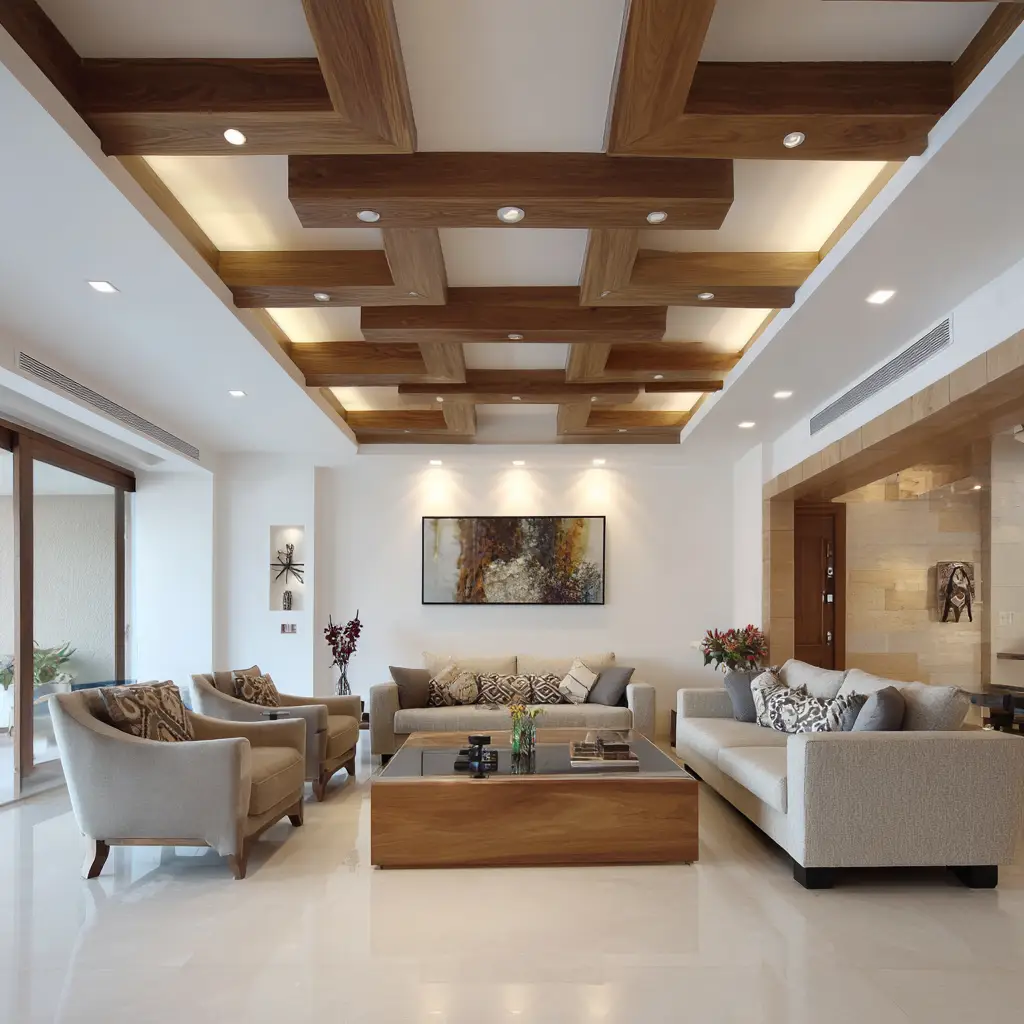
10. Ceiling with Skylight Panels
If you’re lucky enough to incorporate natural light from above, a skylight fall ceiling can be magical. Even if you can’t install a real skylight, faux skylight panels with backlighting can mimic the appearance of daylight. This adds brightness and a sense of openness, particularly beneficial in darker or enclosed living rooms.
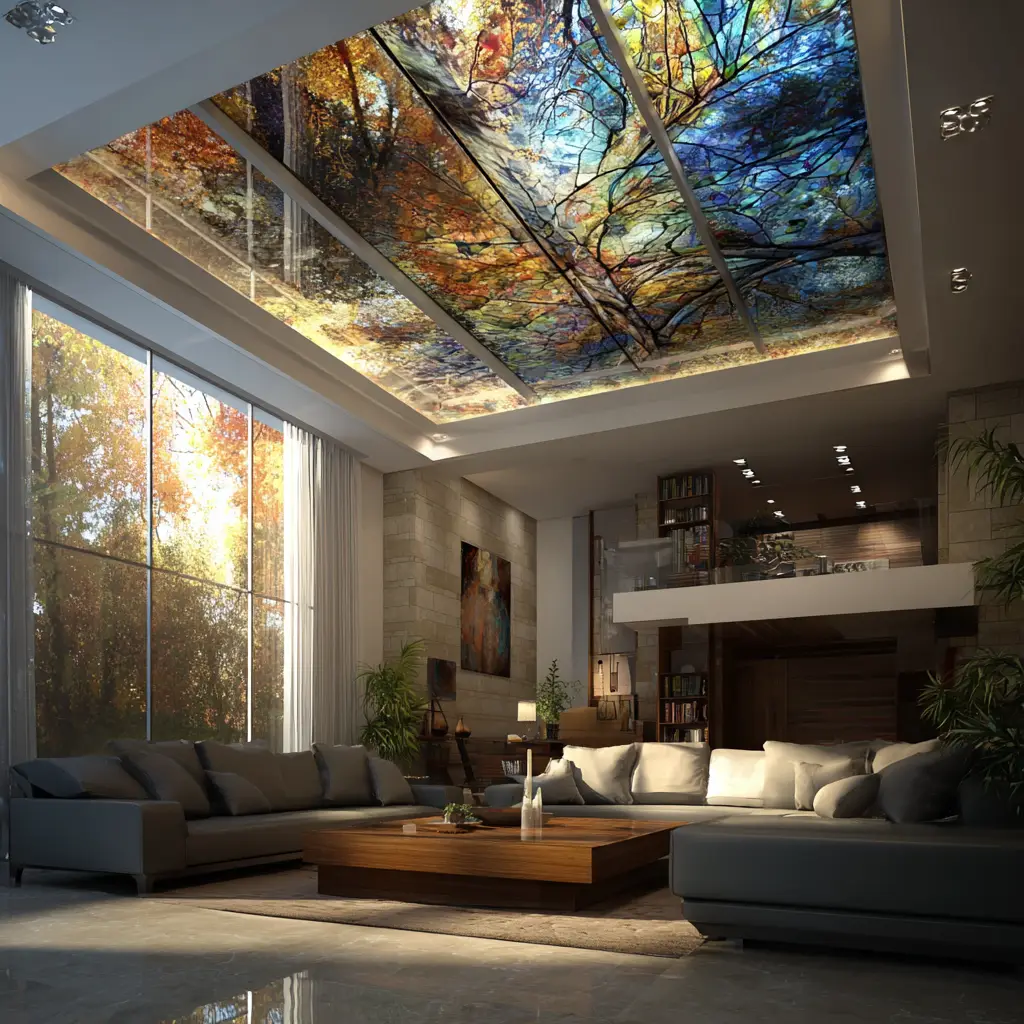
11. Mirror Panel Fall Ceiling
Mirrors can make a room appear larger and more luxurious. Adding mirror panels to your fall ceiling—either in strips or within specific designs—creates an illusion of height and reflects light throughout the space. It’s especially effective in smaller living rooms or those with darker color palettes, where the mirrors help bounce light and make the room feel more open.

12. Minimalist Ceiling with Spotlights
Sometimes, simplicity speaks volumes. A clean white ceiling with embedded spotlights offers focused lighting while maintaining a clutter-free design. This option suits people who value function and order in their living spaces. The lights can be arranged symmetrically or in a custom pattern depending on how you want to distribute the brightness in the room.
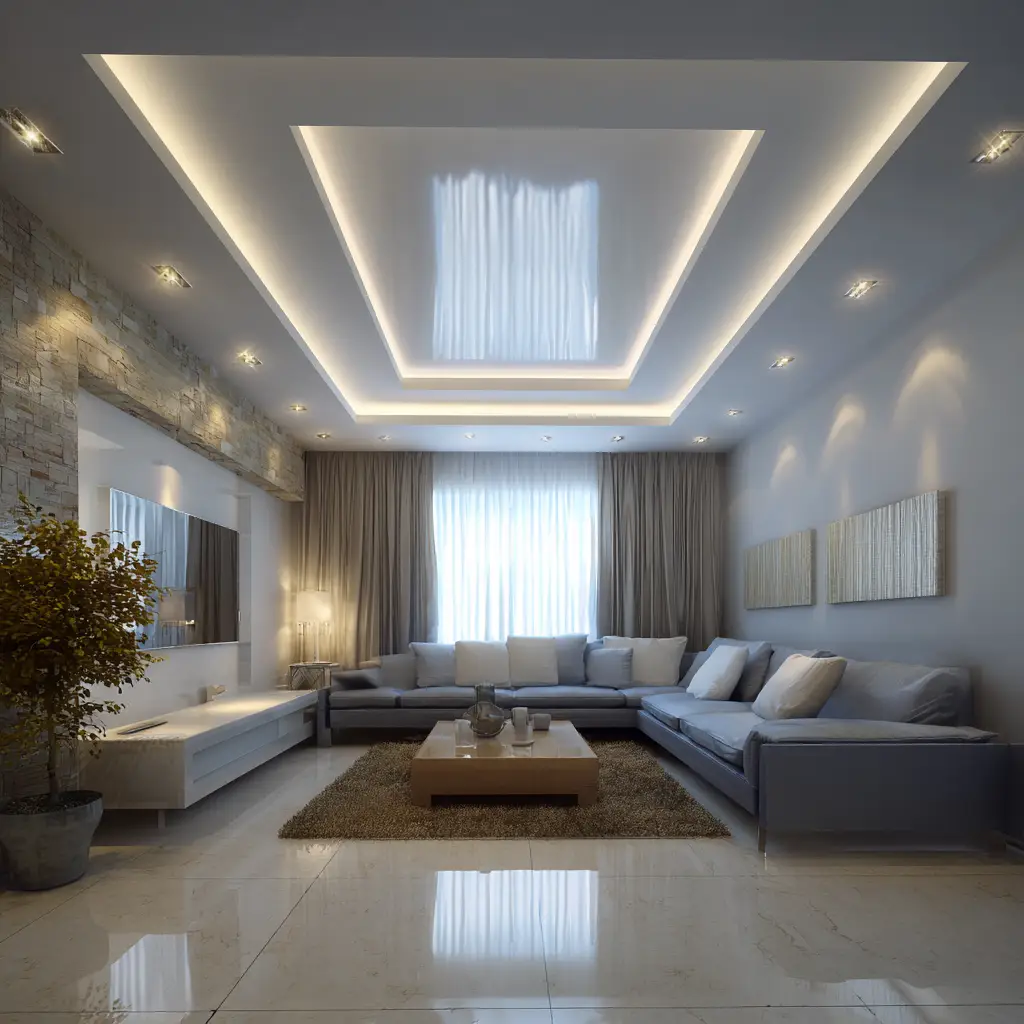
13. Asymmetrical Layered Ceiling
Asymmetry in design can create a sense of movement and modernity. By layering different sections of the ceiling at varying heights, you introduce architectural interest and break away from uniformity. This kind of design can be playful or dramatic, depending on the materials and lighting you choose. It’s a great way to bring energy and uniqueness to your living space.
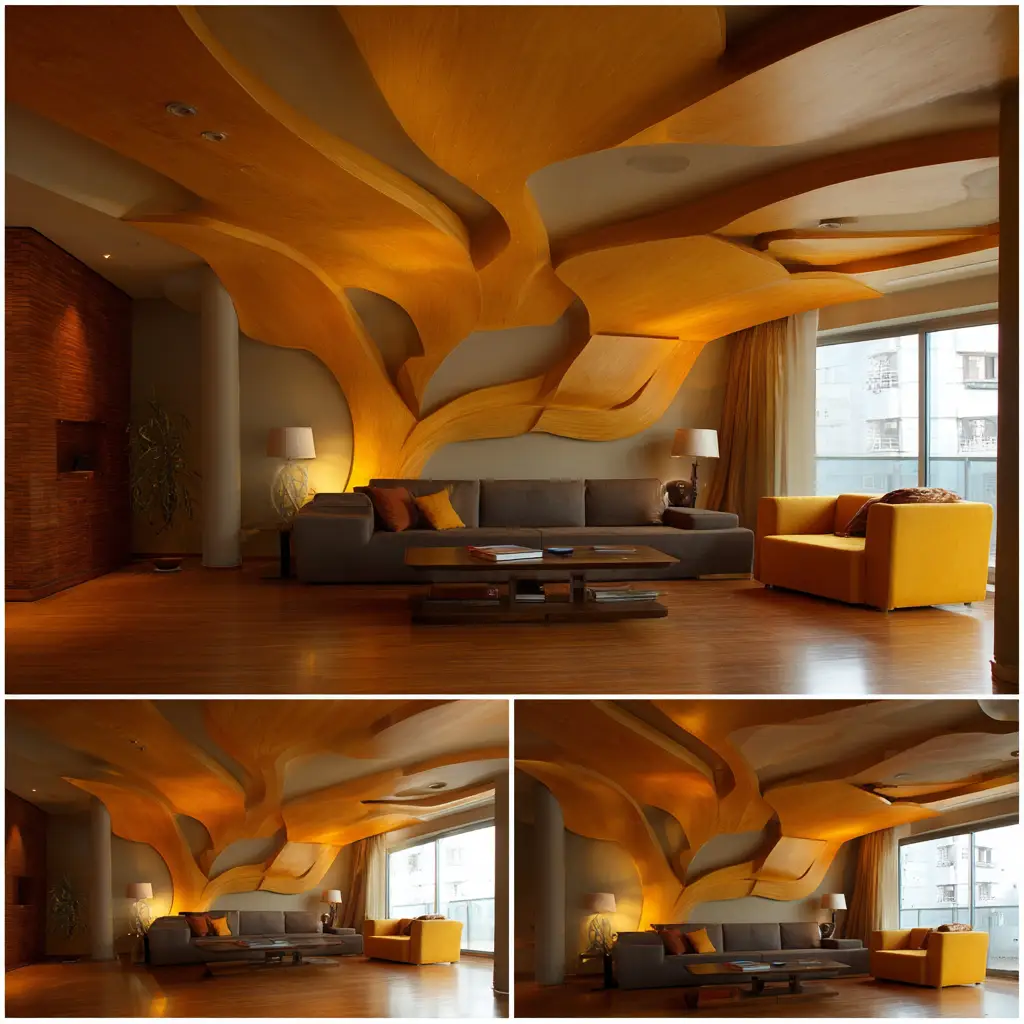
14. Colored Fall Ceiling
Adding a pop of color to your ceiling can make the entire room feel more vibrant. Instead of sticking to the usual white, try subtle hues like sky blue, muted gold, or soft terracotta. The color should complement your overall palette and reflect the mood you want the room to convey—whether that’s calm and cozy or bright and energizing.
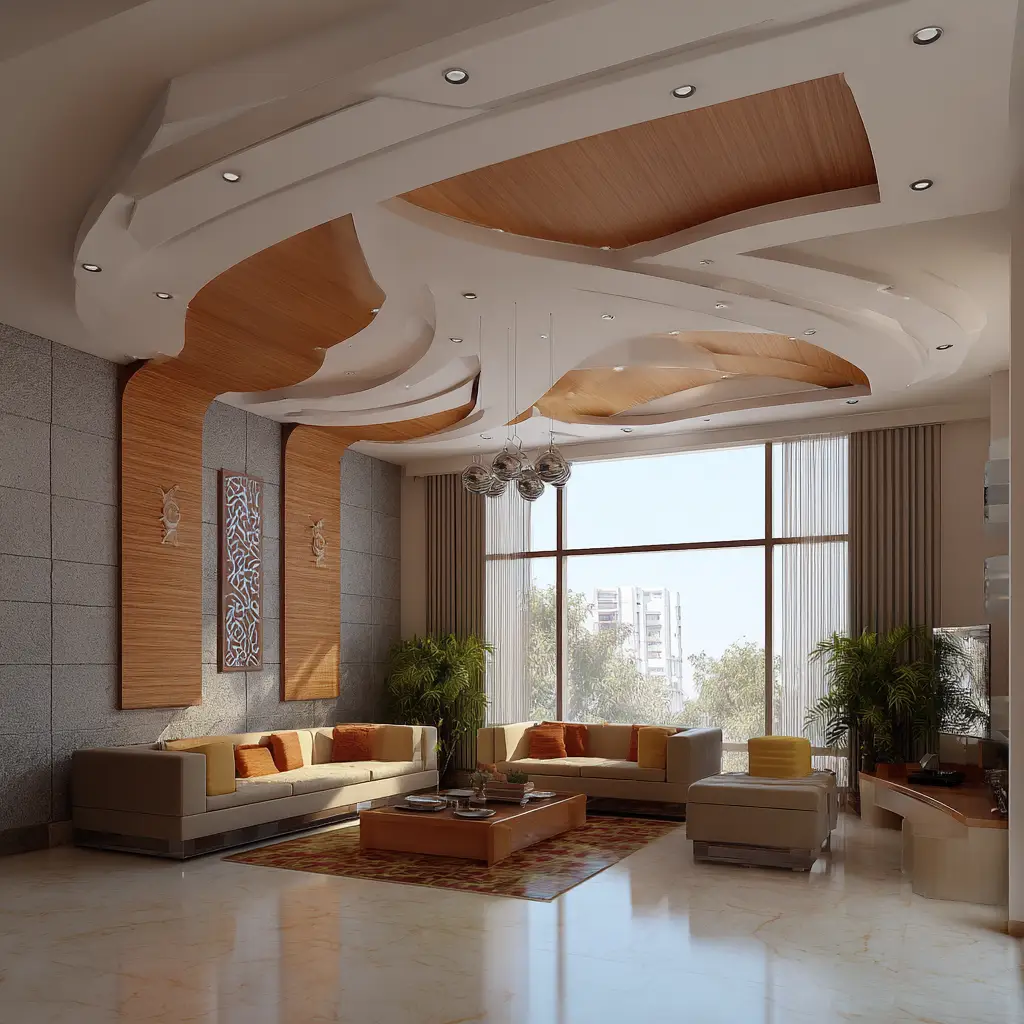
15. Ceiling with Recessed LED Strips
Recessed LED lighting strips built into the false ceiling provide sleek and continuous lighting that feels contemporary and versatile. These lights can change color and brightness, helping you set the tone for any occasion—from a quiet evening at home to a lively gathering. Their hidden design keeps the room looking neat and uncluttered.

16. Lattice Pattern Ceiling
A lattice ceiling introduces texture and pattern through intersecting lines or cut-outs, often made from wood or metal. These designs can be purely decorative or functional, offering a visual break from flat surfaces and introducing shadows that change throughout the day. It adds a handcrafted, designer feel to the space.
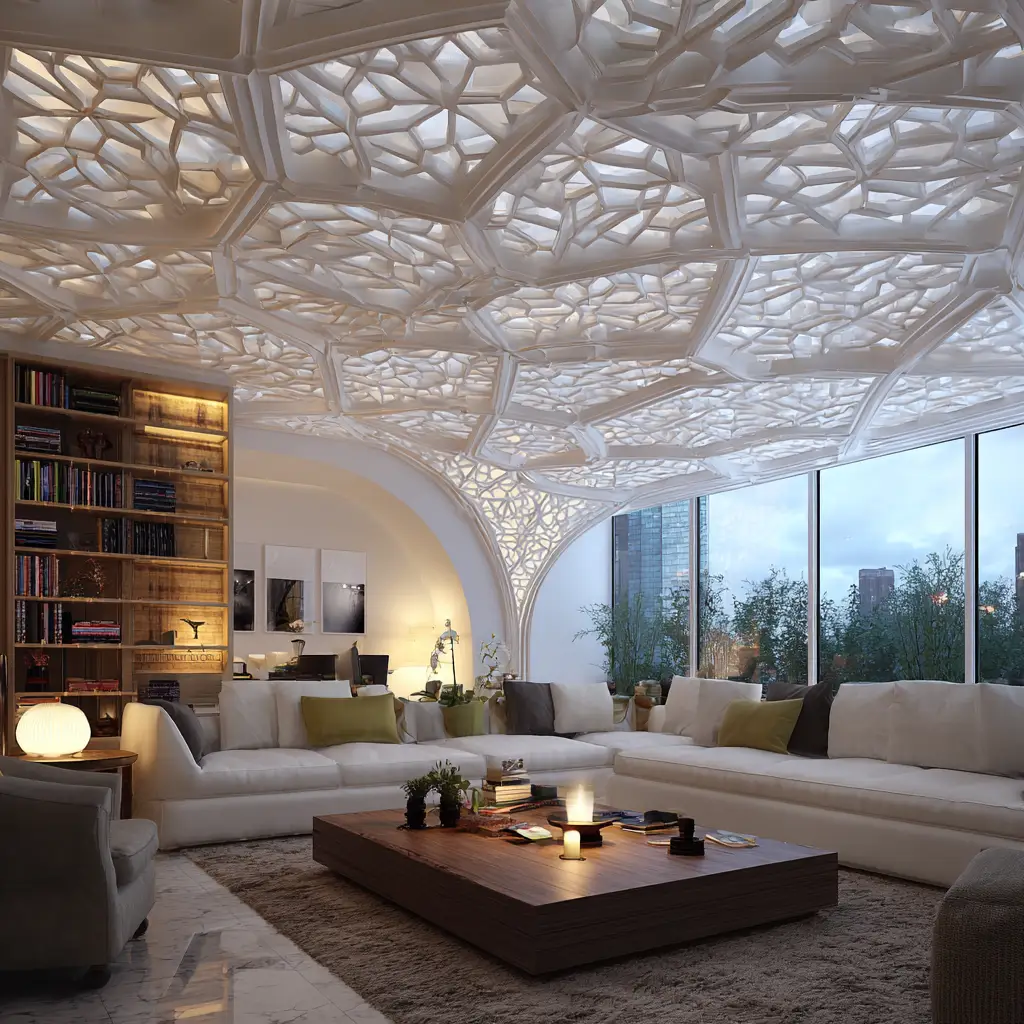
17. False Ceiling with Fan Housing
In many homes, ceiling fans are a necessity, but they can disrupt a ceiling’s visual flow. Designing a fall ceiling with a dedicated space or housing for the fan ensures both aesthetics and function are preserved. It keeps the look clean and prevents the fan from appearing like an afterthought.
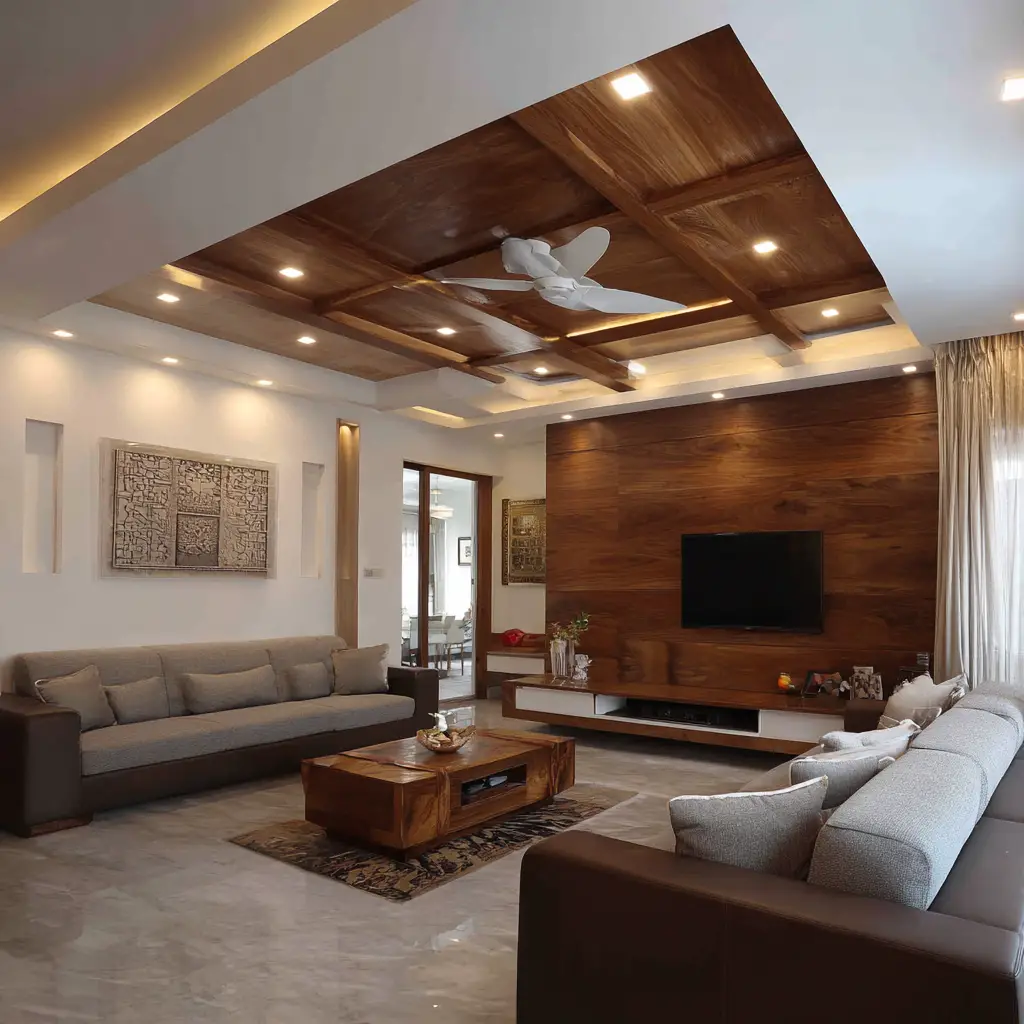
18. Dual-Tone Ceiling
Combining two colors in your fall ceiling can create contrast and interest. For instance, pairing soft grey with white or cream with taupe adds richness and breaks monotony. It can also be used to frame certain areas, such as over a coffee table or seating zone, making the layout feel more structured.
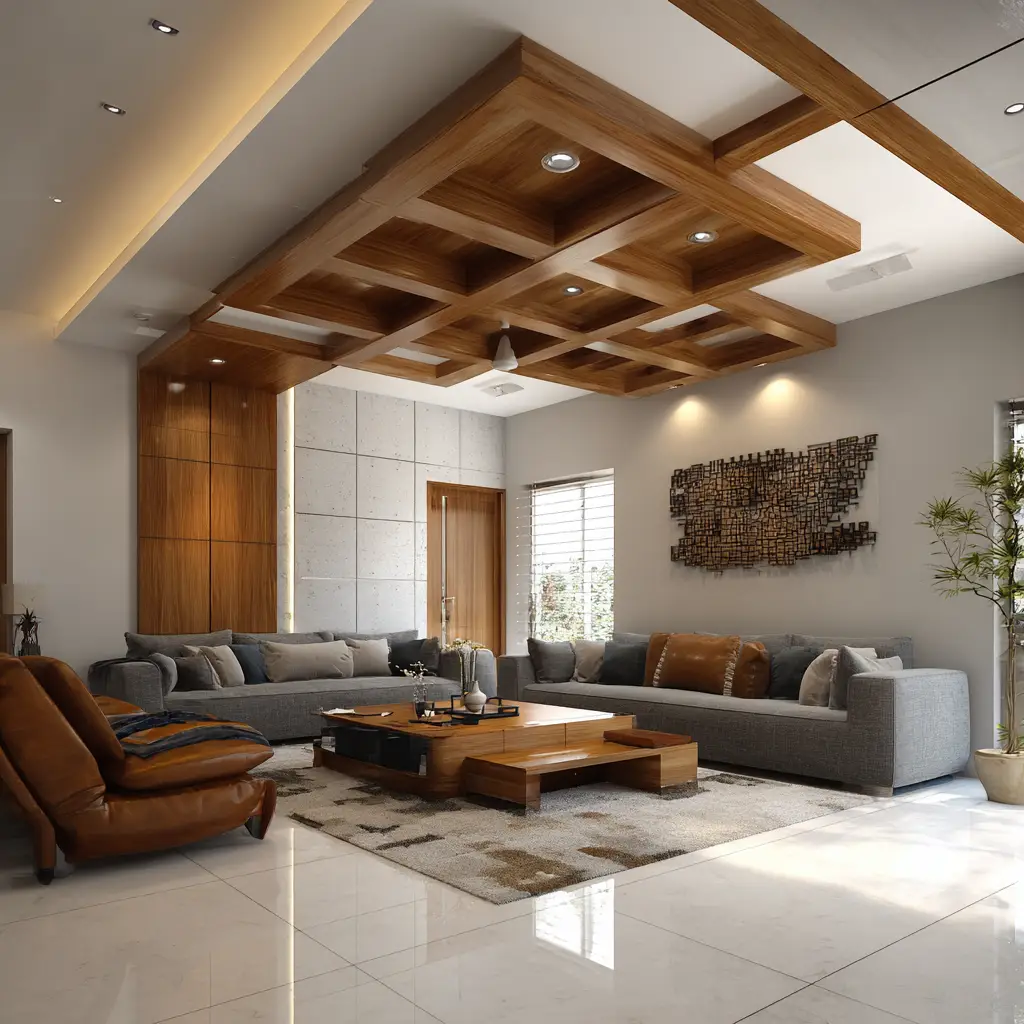
19. Glass Panel Fall Ceiling
Glass panels in the ceiling, whether clear, etched, or frosted, add a touch of sophistication. These can be backlit or left transparent to bring in light and elegance. This look works especially well in modern homes that aim for a sleek, refined finish.
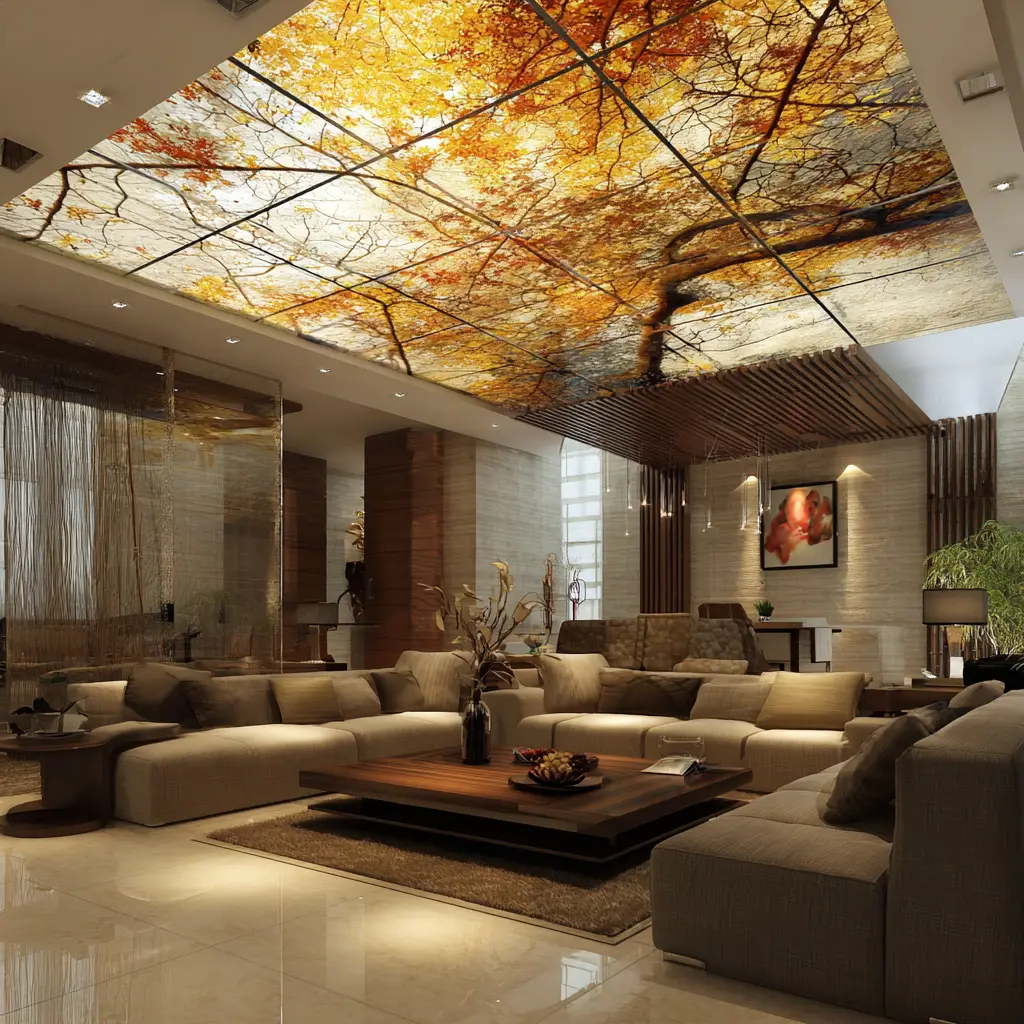
20. Nature-Inspired Ceiling Motifs
Introducing nature into your ceiling design—through leaf patterns, floral carvings, or even bamboo-inspired textures—can create a serene, grounded environment. These designs often feel more personal and organic, making the living room a comforting and warm space.
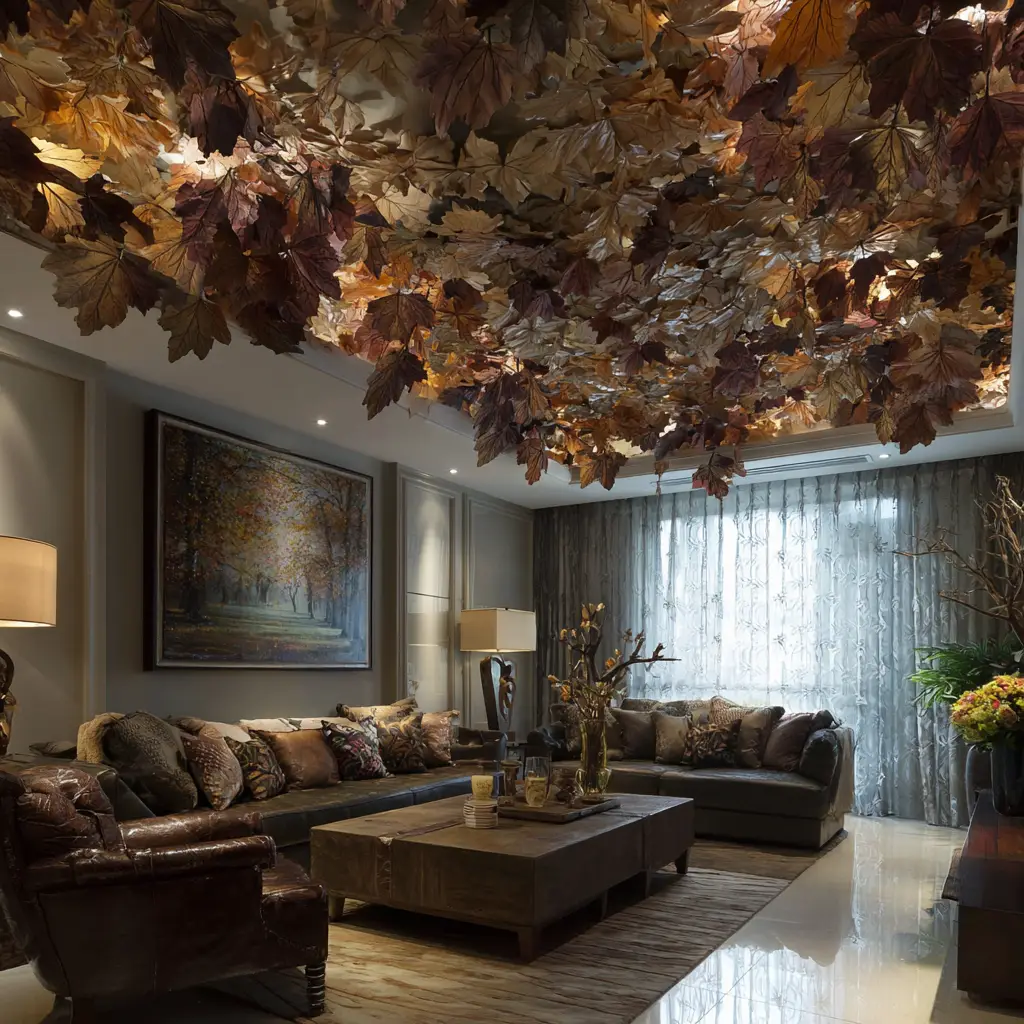
21. Ceiling with Central Light Trough
A long trough or groove in the ceiling with embedded lighting creates a dramatic, linear look. This design is often used in contemporary spaces to add subtle structure while also providing efficient lighting. The trough can guide the eye and help define the room’s focal points.
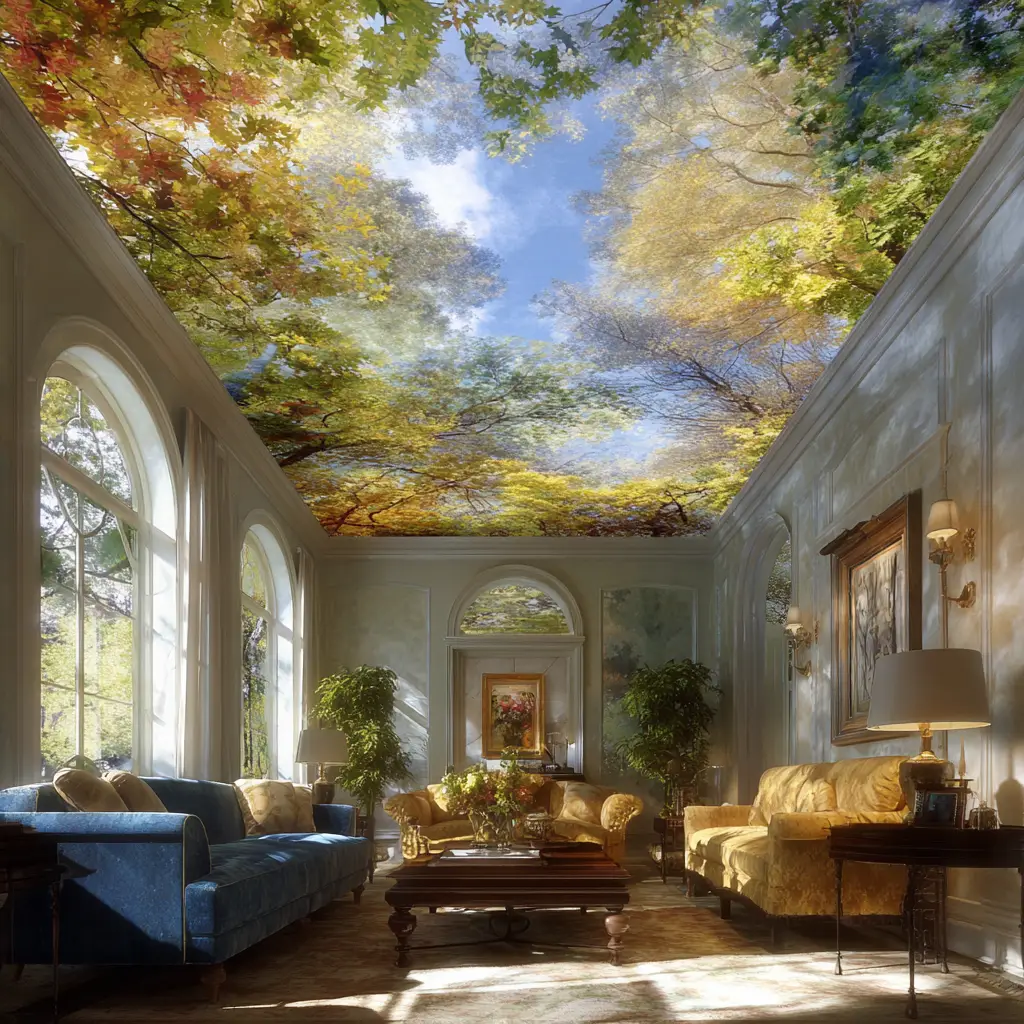
22. 3D Design Fall Ceiling
For the bold and imaginative, 3D ceiling designs create depth and become an artwork of their own. These ceilings might feature waves, geometric forms, or sculptural patterns, giving your living room a futuristic or avant-garde appeal. It’s ideal for those who see their home as a canvas for expression.
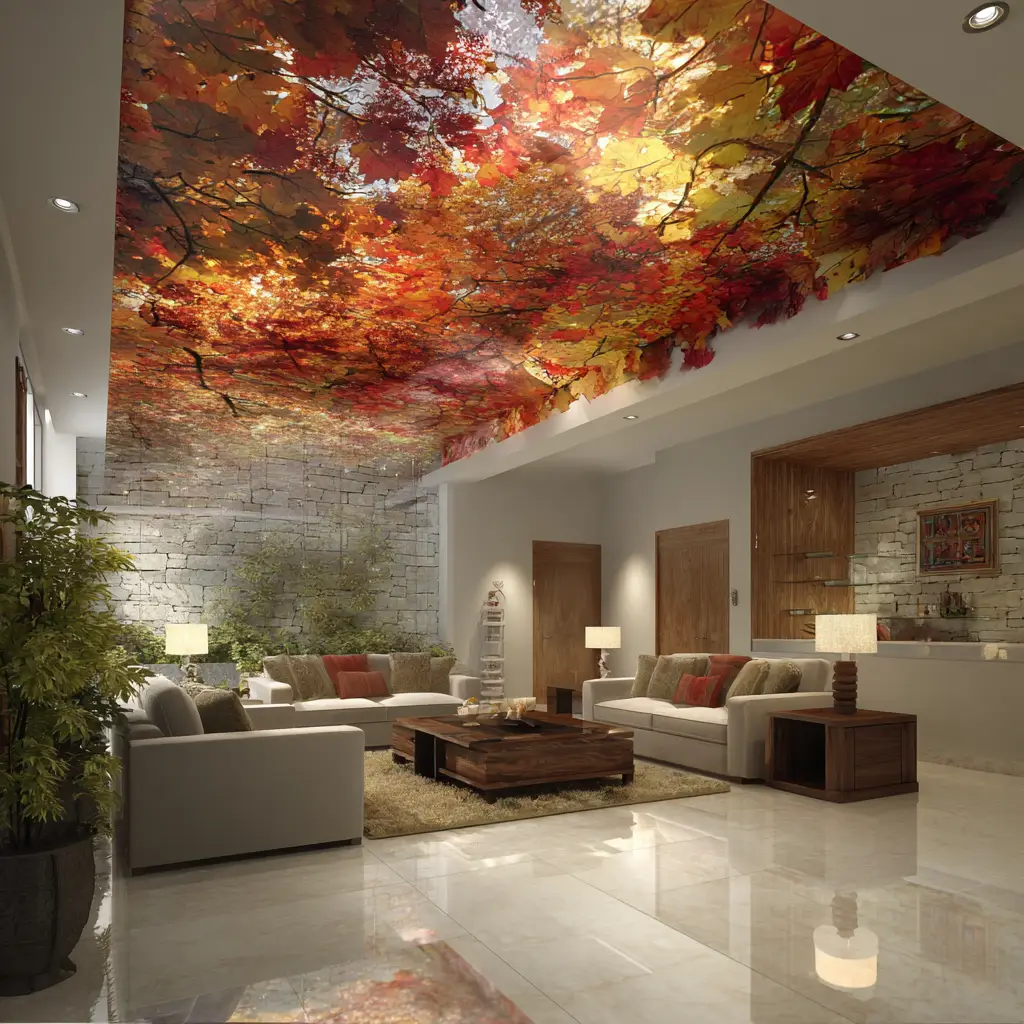
FAQs
What materials are best for fall ceiling designs?
Materials like gypsum, POP, PVC, MDF, wood, and metal are commonly used. Gypsum is lightweight, versatile, and easy to shape, making it ideal for most modern designs.
Do fall ceilings make a room feel smaller?
A fall ceiling lowers the height slightly, but thoughtful design using light colors, mirrors, and lighting can make the space feel larger rather than cramped.
How long does it take to install a fall ceiling?
It usually takes a few days, depending on the complexity of the design and the size of the room. Simple layouts may be completed in 2–3 days.
Are fall ceilings expensive?
The cost varies depending on materials and complexity. Basic POP ceilings are more affordable, while intricate or multi-material designs cost more due to labor and customization.
Can I install a fan or chandelier in a fall ceiling?
Yes, with proper planning. Fall ceilings can be designed with reinforced sections to safely support fans, chandeliers, or pendant lights.
Conclusion
Your living room ceiling is more than just a structural element—it’s an opportunity to express style, create comfort, and enhance your living experience. Fall ceiling designs, whether minimal or intricate, can transform the way you feel in your space. From classic tray styles to bold 3D patterns, the options are endless. The key is to choose a design that reflects your personality, complements your decor, and supports how you live. Let your ceiling speak just as beautifully as the rest of your room.
